Black men employed as sleeping car porters in Canada from the late nineteenth century until the mid‐1950s experienced racial discrimination and exploitation on the job. To improve their situation, they turned to unions such as the Order of Sleeping Car Porters (OSCP) and the Brotherhood of Sleeping Car Porters (BSCP) and fought for better wages and working conditions.
Black sleeping car porters
The struggle for Black labour rights on Canada’s railways
By Travis Tomchuk
Published: February 27, 2014
Tags:
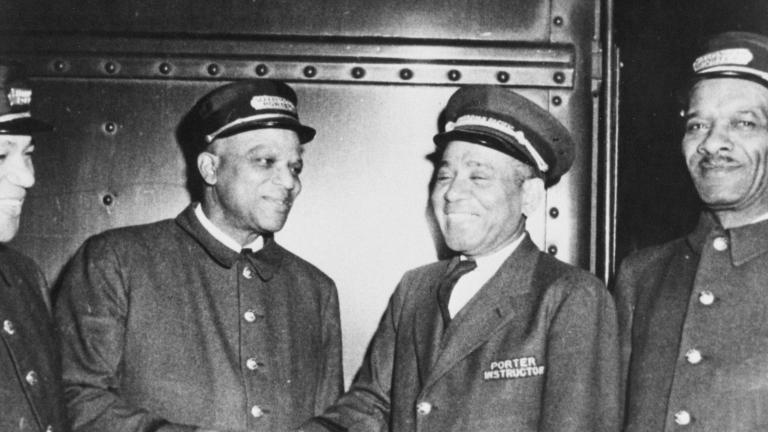
Photo: Library and Archives Canada, PA-212572
Story text
Sleeping car porters played an essential role during the heyday of rail travel in Canada. Black men from across Canada, the United States, the Caribbean, and as far away as Wales and the Dutch East Indies were hired as sleeping car porters for Canadian railway companies. In this role, they attended to travellers aboard sleeping cars and were expected to cater to their passengers’ every need.1
They were responsible for greeting passengers, stowing baggage, setting up berths in the evening, converting berths to seats in the morning, shining shoes, brushing off coats and hats, looking after sick children and adults, dealing with passengers who had had too much to drink, babysitting children, and doing anything else the passengers required. Porters also had to police passengers and be on the lookout for thieves, gamblers and troublesome folks.
[W]e were babysitters, not only for little kids but for adults.
Porters were not allowed to sit with passengers. They were supplied with one small and uncomfortable folding seat where they could rest when not attending to guests. Porters were allowed to eat in the dining car only outside the regular hours of operation, such as early in the morning. However, if early‐rising passengers were eating breakfast at the same time as porters, a curtain would be pulled to separate the porters from the passengers.3
The typical run lasted 72 hours but porters were not provided with sleeping quarters aboard the train. Instead they had to take naps when and where they could.4
“When I first started working for the CPR, there was no berth reserved for the porter to sleep in and we spent those precious three hours on a seat in the smoking room. There was a mattress underneath to put on the seat, with some sheets as well. That was your bed. It was very unhealthy, because men were smoking in there all day,” said Stanley G. Grizzle, a sleeping car porter and an organizer with the Brotherhood of Sleeping Car Porters, who lived in Toronto.5
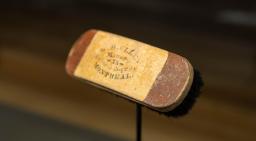
Limited job opportunities for Black men
Sleeping car porters were almost all Black men. During the late nineteenth and first half of the twentieth century, Black men had very few job opportunities open to them. Despite their level of achievement – porters tended to be highly educated men, with university degrees in science, medicine or business administration – prevailing racist attitudes held that Black people were socially inferior to whites and were meant to work in menial or subordinate vocations, such as that of the sleeping car porter.
Why did I get a job as a porter on the railway? I couldn’t get anything else – and I didn’t want to starve.
Grizzle recalls that many porters were “intelligent young Black men who had achieved a measure of education that should have guaranteed them a job befitting their academic achievements and in line with their training. But they were denied those opportunities by a racist society, and instead had to go into a line of work that forced them into that demeaning role of servant.”7
Poor wages, precarious employment
Porters’ wages were low and pay increases were rare. The low wages porters earned were reduced even further because they had to pay for their uniforms, shoeshine kit and polish, and the meals they ate while on a run. In addition, porters were responsible for replacing any missing towels, bed sheets or pillowcases from their wages.
Low pay meant that tips were necessary to supplement porter incomes, and this dependence put porters in a precarious and servile position. If the service they provided was not exactly what a passenger expected, no tip would be given.8
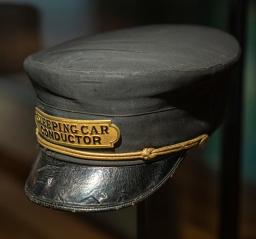
Prior to unionization, porters could be fired at any time without a reason. A complaint from a passenger was sometimes enough to get a porter dismissed at the end of a run.9
“Despite the steady wages and the adventure of travel, the work was not easy. We left our families for weeks at a time to journey across the continent and back, sleeping not more than three hours a night. Vacations were nonexistent and dismissals commonplace,” said Grizzle.10
Unionization
The porters wanted to improve their working conditions, but unions, such as the Canadian Brotherhood of Railroad Employees (CBRE), would not allow Black people to become members. And so, in April 1917, the sleeping car porters began to organize their own union. This union, known as the Order of Sleeping Car Porters (OSCP), was the first Black labour union in North America. The OSCP was established in Winnipeg by porters John Arthur Robinson, J.W. Barber, B.F. Jones and P. White.
The OSCP faced many difficult challenges. They operated without support from the CBRE, which continued to negotiate contracts with employers on behalf of white union members but did nothing to improve the working conditions of Black porters. The OSCP had to overcome the racism of the Canadian National Railway (CNR) management, which viewed Black people as a cheap and disposable pool of labour who did not deserve job protections.11
Despite these challenges, by 1919 – only two years after being formed – the OSCP had already negotiated two contracts with the CNR. The contracts improved wages and job protections for all porters regardless of whether they were Black or white. The union also called out the hypocrisy of white unionists who talked about class solidarity while excluding Black workers.12
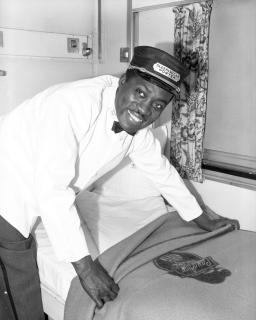
After its hard‐fought successes with CNR porters, the OSCP focused on organizing porters working for the Canadian Pacific Railway (CPR). This company was even more resistant to unionization than the CNR: it forced employees to sign contracts that prohibited union activity and did not hesitate to fire employees involved in organizing.
In the early 1920s, the CPR dismissed 36 porters, some with as many as 12 years on the job, because of union activities.13 This mass firing put a chill on sleeping car porter unionization efforts for over 10 years, until porters began organizing with the support of the US‐based Brotherhood of Sleeping Car Porters (BSCP) in 1939.14
For the next few years, porters across the country organized in secret so they would not lose their jobs. In 1942, porters voted to unionize, but a collective bargaining agreement was not finalized until May 1945. Some of the gains made included a monthly salary increase, two weeks of paid vacation after one year of service, overtime pay, and better working conditions – including a reserved berth on each car that provided porters with a place to sleep.15
However, the struggle for racial equality and respect on the job was not over with unionization. Porters were still discriminated against when applying for the position of sleeping car conductor – a senior and better‐paid role that was reserved for white people. The BSCP filed an official complaint with the federal Department of Labour under the Fair Employment Practices Act of 1953. After a year of “conciliation and persuasion,” one of the complainants, George V. Garraway, was hired as a conductor – the first Black Canadian to be hired in this position in Canada.16
These improvements and opportunities were the result of courageous labour organizing in the face of significant workplace and societal racism. Changes in demographics and technology in the coming decades led to less demand for sleeping car porters, but the struggles and experiences of these workers were pivotal for generations of Black Canadians.
We did not bow down to the racism and the segregation imposed on us. We stood up for our rights and founded the Brotherhood of Sleeping Car Porters.
Ask yourself:
Has my ethnicity or the colour of my skin affected my experience on the job?
What aspects of my work are unfair or exploitive?
Do I know any groups of workers who face unfair working conditions?
Explore Black Canadian history
The story of Black slavery in Canadian history
By Steve McCullough and Matthew McRae
Canada celebrates being a destination for Americans who escaped slavery via the Underground Railroad. But slavery was also part of Canada’s history for more than 200 years.

Viola Desmond: One woman’s resistance
Viola Desmond helped inspire Canada’s civil rights movement by refusing to give up her seat in a movie theatre. Now, she is on the $10 bill.
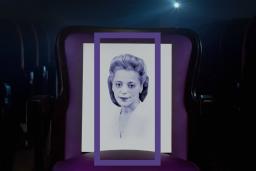
The story of Africville
By Matthew McRae
If you’ve never heard of Africville, you’re not alone. This small Black community was demolished by the City of Halifax in the 1960s. Its residents have been fighting for justice ever since.

References
- 1 Stanley G. Grizzle, My Name’s Not George: The Story of the Brotherhood of Sleeping Car Porters in Canada. Umbrella Press, 1998, p. 27; Sarah‐Jane Mathieu, North of the Color Line: Migration and Black Resistance in Canada, 1870–1955. University of North Carolina Press, 2010, p. 65.
- 2 Sarah‐Jane Mathieu, “North of the Colour Line: Sleeping Car Porters and the Battle Against Jim Crow on Canadian Rails, 1880–1920.” Labour/Le Travail vol. 47, 2001), p. 15.
- 3 Grizzle 38–40.
- 4 Grizzle 26–27, 42; Mathieu “North” 15–16.
- 5 Grizzle 40.
- 6 Grizzle 37.
- 7 Grizzle 67.
- 8 Agnes Calliste, “Sleeping Car Porters in Canada: An Ethnically Submerged Split Labour Market,” Canadian Ethnic Studies vol. 19, no. 1, 1987, p. 3, 5.
- 9 Calliste 7; Grizzle 52; Mathieu North 137.
- 10 Grizzle 26–27.
- 11 Mathieu “North” 10–11.
- 12 Mathieu “North” 38.
- 13 Grizzle 18–19.
- 14 The Brotherhood of Sleeping Car Porters (BSCP) was established by Asa Philip Randolph in New York City in 1925 (Grizzle 21).
- 15 Calliste 9; Grizzle 23, 40; Mathieu North 205.
- 16 Calliste 11–12; Grizzle 19.
- 17 Grizzle 27.
Suggested citation
Suggested citation : Travis Tomchuk. “Black sleeping car porters.” Canadian Museum for Human Rights. Published February 27, 2014. https://humanrights.ca/story/sleeping-car-porters
Continue the conversation
This story sparked interesting discussion when we shared it on social media. Follow us on Facebook and X to join the conversation.
Peggy Vermette
facebook February 26, 2020 by Peggy VermetteDalyce Newby
facebook February 27, 2020 by Dalyce NewbyKathy Grant
facebook February 26, 2020 by Kathy GrantContinue the conversation
Lee Paula Springer
facebook February 26, 2020 by Lee Paula SpringerFred Cox
facebook February 26, 2020 by Fred CoxTerrance Frank
facebook February 26, 2020 by Terrance Frank